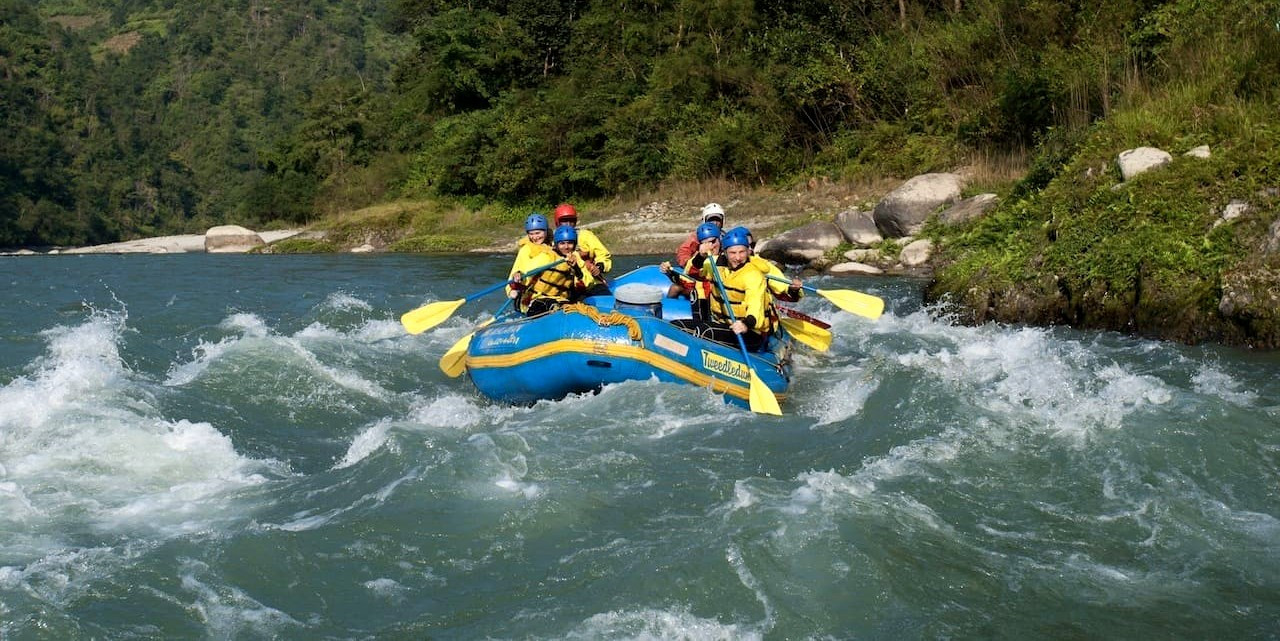Trishuli River
The Trishuli River, named after the trident of Lord Shiva, is one of the most popular destinations for white water rafting in Nepal. Flowing from the high mountains down through the more temperate regions of the lower Himalayas, it presents rafters with a variety of rapids that can cater to both beginners and experienced adventurers. Here's an in-depth look at what makes the Trishuli River a top choice for rafting enthusiasts:
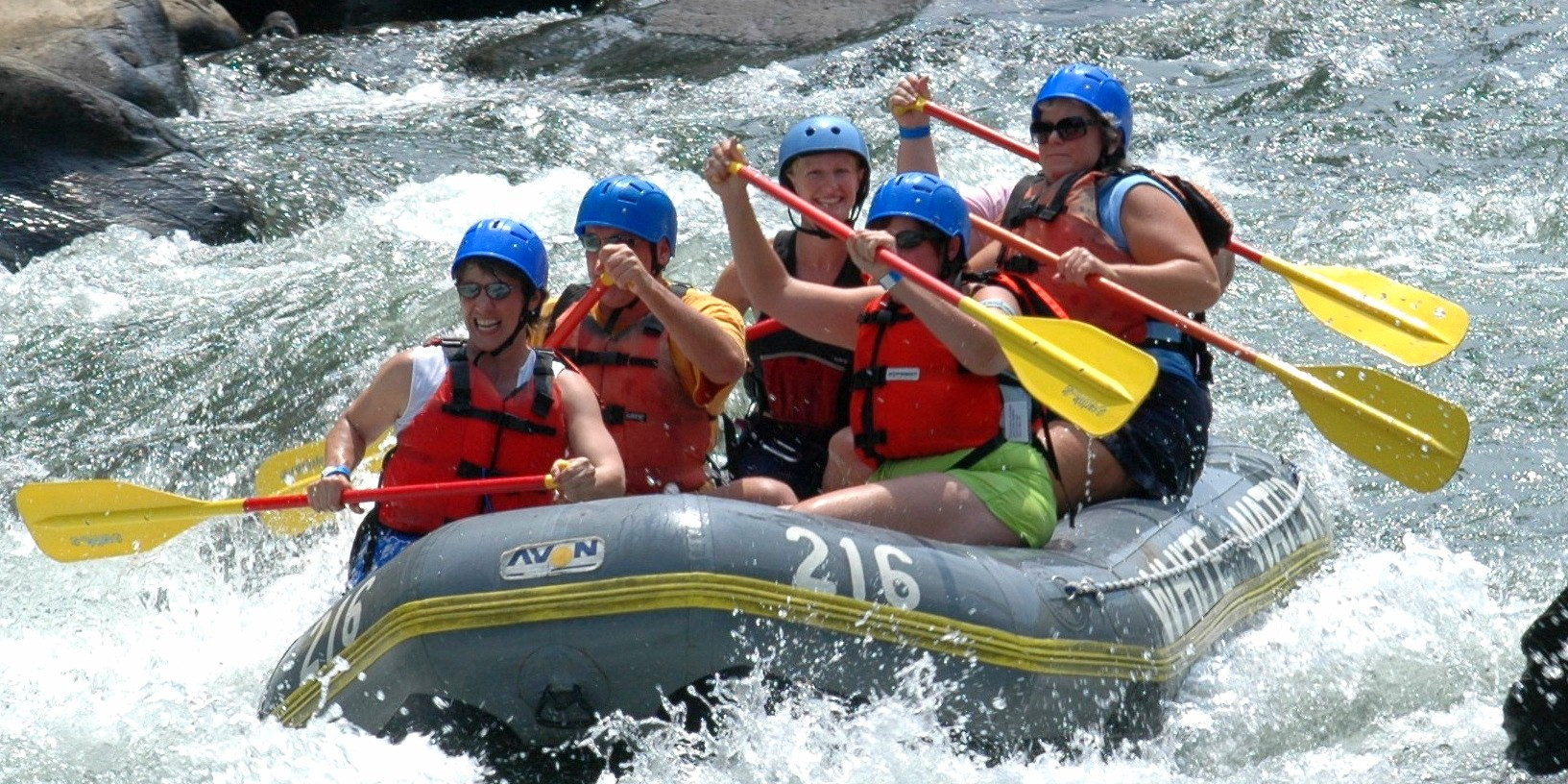
-
Location and Accessibility: The Trishuli River is conveniently located, making it highly accessible for visitors. It lies along the main highway that connects Kathmandu to Pokhara and Chitwan, which means getting there is straightforward, usually a short drive from Kathmandu, Pokhara, or Chitwan. This accessibility makes it a favorite among those looking to experience rafting without venturing too far from Nepal’s major tourist hubs.
-
Rapids and Rafting Experience: The river features a wide range of rapids, from Grade II to IV, depending on the season. During the monsoon, the water levels rise, and the river transforms, increasing both the intensity and the excitement of the rapids. Outside of the monsoon season, the waters are more controlled, making it suitable for beginners and families. The variety of rapids allows rafters to experience both thrilling drops and calm stretches where they can take in the scenery.
-
Scenic Beauty: The Trishuli River runs through stunning gorges and offers picturesque views of the surrounding landscape. Rafting along this river not only provides adrenaline rushes but also the opportunity to see Nepal’s rich biodiversity. The banks of the river are adorned with lush forests, and the backdrop is often dramatic hills and terraces.
-
Safety and Facilities: Safety on the Trishuli River is a priority, with numerous experienced rafting companies offering trips that include professional guides and safety equipment. Many of these companies are based in Kathmandu or Pokhara and offer packages that include transportation, meals, and sometimes overnight stays in riverside camps or lodges.
-
Cultural Experience: Rafting the Trishuli also offers a cultural dimension, as the river flows near various small villages and settlements. Participants often have the opportunity to interact with local communities, learn about their lifestyles, and sometimes participate in traditional meals or celebrations.
Ideal for
The Trishuli River is perfect for:
-
Day trips or weekend getaways due to its proximity to major cities.
-
Rafters of all skill levels, from beginners to those seeking a challenging experience.
-
Those looking to combine their rafting adventure with a visit to Pokhara or Chitwan, as it lies en route.
Trishuli River is a versatile rafting destination that promises adventure, convenience, and the beauty of the Nepalese outdoors, making it an unforgettable part of any visit to Nepal. Whether you're looking for a quick adrenaline-filled day trip or a leisurely escape amidst nature, the Trishuli delivers both excitement and accessibility.
Bhote Koshi River
The Bhote Koshi River, often hailed as one of the steepest rivers available for white water rafting in Nepal, offers an adrenaline-pumping experience that attracts thrill-seekers from around the world. Originating from the Tibetan plateau, this river hurtles down through steep gorges and rugged terrain, creating a rafting journey that is both intense and exhilarating. Here’s a detailed look at what makes the Bhote Koshi River a standout choice for adventure enthusiasts:
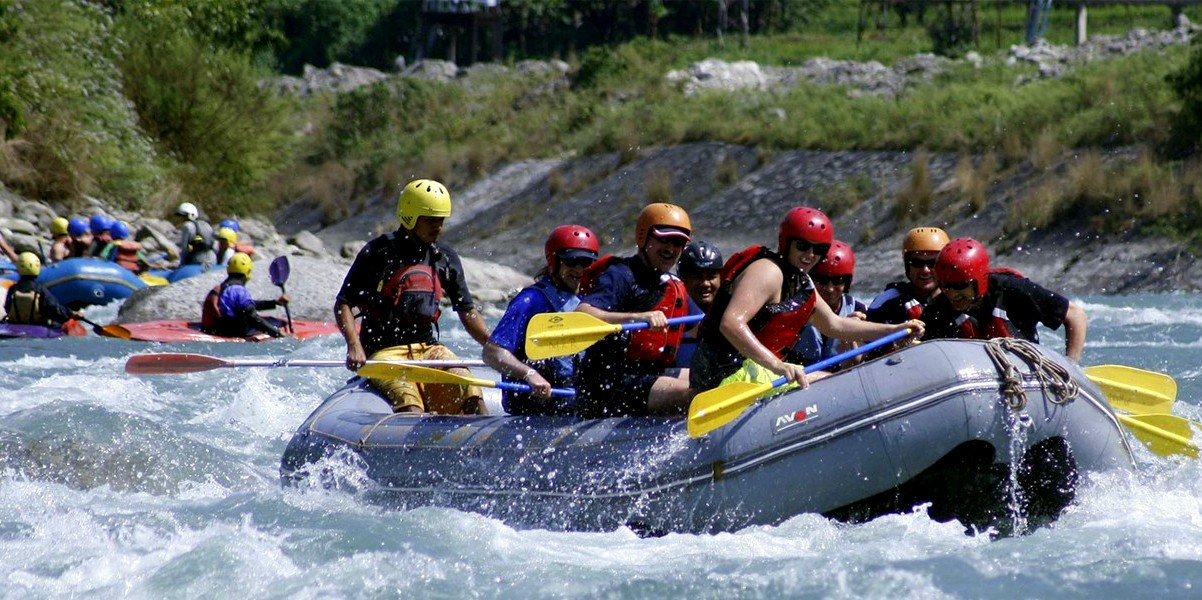
-
Location and Accessibility: The Bhote Koshi River is located approximately three hours’ drive from Kathmandu, close to the Nepal-Tibet border. This proximity to the capital makes it accessible for those looking to experience high-octane rafting without extensive travel. The river's course runs alongside the Araniko Highway, making the logistics of reaching and rafting this river relatively straightforward.
-
Rapids and Rafting Experience: The Bhote Koshi is renowned for its fast-flowing waters and technical rapids, classified mainly between Grade IV and V, and sometimes reaching up to Grade VI during the monsoon season. This makes it one of the most challenging and thrilling rafting experiences in Nepal. The river’s steep gradient means that the action is non-stop, offering little respite between the rapid sequences, which is perfect for those who crave continuous excitement.
-
Scenic Beauty: While the Bhote Koshi is often sought after for its rafting challenges, it also offers spectacular scenery. The river cuts through deep gorges and passes rugged terrains, providing a backdrop of dramatic cliffs and lush forests. This scenic route offers a stark contrast to the tranquility of the natural surroundings, making the experience even more memorable.
-
Safety and Facilities: Due to the intense nature of the rapids, rafting the Bhote Koshi River requires a higher level of precaution. Rafting companies operating on this river are well-equipped with experienced guides who are trained to navigate its challenging waters safely. Safety briefings and proper gear, including helmets, life jackets, and wetsuits, are mandatory for all participants.
-
Duration and Packages: Rafting trips on the Bhote Koshi can vary in length, typically ranging from a single day to two days. Many operators offer packages that include transportation to and from Kathmandu, all rafting equipment, meals, and overnight camping for longer trips. These packages are designed to provide a comprehensive and hassle-free adventure experience.
Ideal for
The Bhote Koshi River is best suited for:
-
Experienced rafters seeking a high-adrenaline adventure.
-
Those who enjoy technical challenges and rapid descents.
-
Adventure sports enthusiasts looking for a quick but intense escape from Kathmandu.
Bhote Koshi River offers one of the most thrilling white water rafting experiences in Asia. Its powerful rapids, beautiful gorges, and accessibility from Kathmandu make it a top choice for those looking to test their rafting skills and endurance. For adventurers seeking the ultimate rafting challenge, the Bhote Koshi is a must-try destination.
Kali Gandaki River
The Kali Gandaki River, named after the Hindu goddess Kali, stands out as one of Nepal's most revered and challenging rivers for white water rafting. This river offers an exceptional mix of thrilling rapids, breathtaking scenery, and rich cultural experiences as it flows through the deepest gorge in the world between the towering Annapurna and Dhaulagiri mountains. Here’s a detailed exploration of what makes the Kali Gandaki a premier destination for rafters:
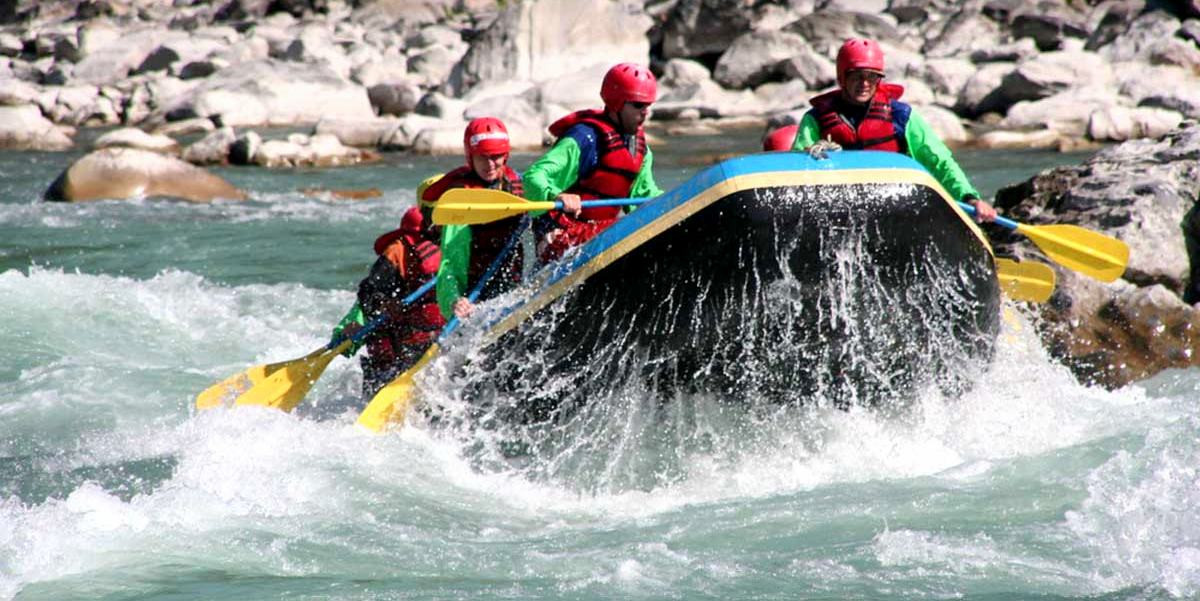
-
Location and Accessibility: The Kali Gandaki begins its journey in the Mustang region, near the Tibetan border, and flows southward into Nepal, cutting through the Himalayas to create the Kali Gandaki Gorge. The river is accessible from Pokhara, which serves as the starting point for most rafting expeditions on this river. It’s about a 3-hour drive from Pokhara to the put-in point near Nayapul, which is also well-known as a trekking route start.
-
Rapids and Rafting Experience: Rafting on the Kali Gandaki is known for its diverse and exhilarating rapids, ranging from Grade III to IV+. This river is not just about high adrenaline; it’s also about enjoying prolonged stretches of calm water that allow rafters to soak in the stunning surroundings. The river’s flow is strongest during the monsoon months, but it offers good rapids throughout the rafting season, which runs from September to early December and then from March to early June.
-
Scenic Beauty and Cultural Immersion: The journey down the Kali Gandaki is a scenic marvel. Rafters are treated to views of snow-capped mountains, verdant hills, and traditional villages. Additionally, the riverbanks are dotted with ancient temples and monasteries, offering a glimpse into the spiritual and historical aspects of Nepalese culture. The interaction with local communities living along the river provides a wonderful opportunity for cultural immersion.
-
Safety and Facilities: The Kali Gandaki, while offering thrilling rapids, is navigated with a high emphasis on safety. Rafting operators provide experienced guides who know the river intimately, along with all necessary safety equipment. Many operators also offer multi-day rafting trips that include camping along the river, providing all the necessary gear and support for a comfortable adventure.
-
Duration and Packages: Rafting trips on the Kali Gandaki typically range from three to five days, making them ideal for those looking to combine adventure with exploration in a more extended format. These packages often include all meals, equipment, and transportation back to Pokhara, along with guided excursions to nearby cultural sites.
Ideal for
The Kali Gandaki River is perfect for:
-
Intermediate and experienced rafters looking for a blend of adventure and scenic beauty.
-
Those interested in a longer rafting trip that combines physical challenges with cultural exploration.
-
Nature lovers and cultural enthusiasts who appreciate the Himalayan landscapes and traditional Nepalese village life.
Kali Gandaki River provides an all-encompassing rafting experience that is as culturally enriching as it is thrilling. With its challenging rapids, stunning natural beauty, and deep cultural connections, it remains one of the most unforgettable rafting destinations in Nepal.
Seti River
The Seti River in Nepal is a hidden gem among rafting enthusiasts, known for its gentle rapids and stunningly clear waters. Winding through beautiful landscapes and serene forests, the Seti offers a more relaxed rafting experience that is perfect for families or those looking for a softer adventure. Here's a closer look at what makes the Seti River a unique choice for white water rafting:
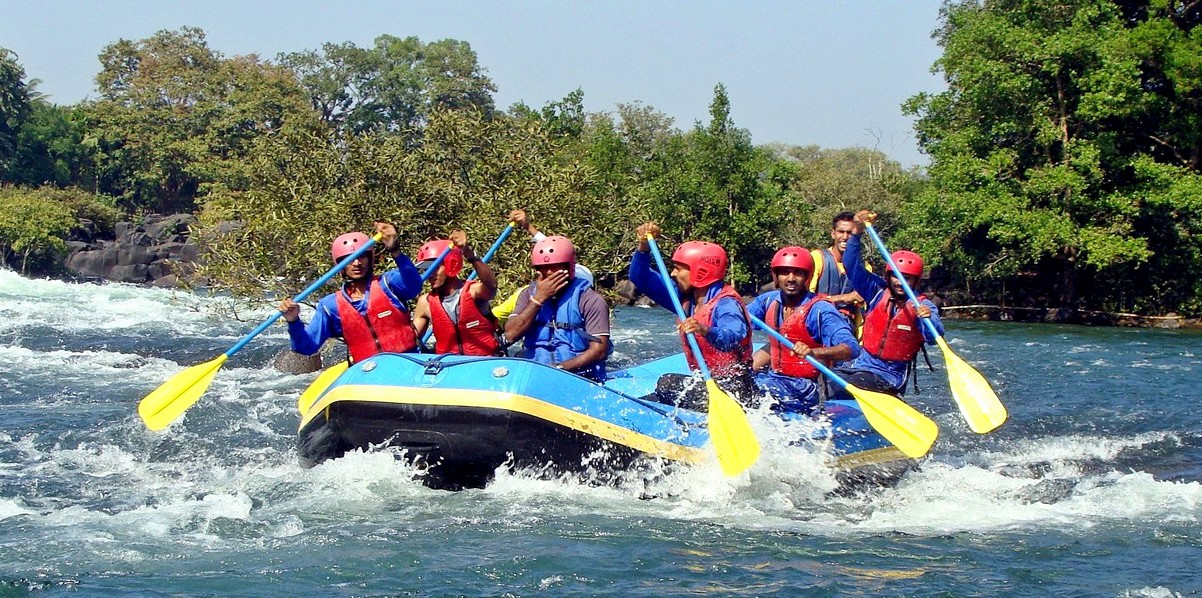
-
Location and Accessibility: The Seti River originates in the Annapurna Himalayas and flows south to join the Trishuli River. It is conveniently located, with the put-in point just a short drive from Pokhara, making it highly accessible for those staying in or near this popular tourist city. The river's proximity to Pokhara also allows for easy combination with other local activities and attractions.
-
Rapids and Rafting Experience: The Seti River features mostly class II and III rapids, which makes it ideal for beginners, families, and those looking for a gentle rafting experience. The rapids are exciting enough to give a taste of adventure without the intensity found in more challenging rivers. The warm water of the Seti is another inviting characteristic, making it comfortable for swimming and playing in the water during the calmer sections of the trip.
-
Scenic Beauty: The rafting journey along the Seti River is incredibly scenic. The river meanders through lush forests, providing spectacular views of the Annapurna range at various points. The environment is serene, with abundant opportunities to observe local wildlife and birds. The calm stretches of the river are perfect for taking in the tranquil surroundings and enjoying a more relaxed pace of travel.
-
Safety and Facilities: Rafting on the Seti River is well-regulated, with experienced guides who ensure a safe and enjoyable experience for all participants. Operators provide all necessary safety equipment, including life jackets and helmets, and conduct thorough safety briefings before setting off. The river's gentler nature also contributes to its safety, making it a preferred choice for less experienced rafters and children.
-
Duration and Packages: Rafting trips on the Seti River can vary in length but are typically offered as one or two-day excursions. These trips often include camping overnight on the riverbanks in tents, offering a delightful outdoor experience. Packages generally cover all equipment, meals during the trip, and transportation to and from Pokhara.
Ideal for
The Seti River is particularly well-suited for:
-
Families and beginner rafters due to its mild rapids.
-
Those looking to combine a peaceful rafting trip with the exploration of local flora and fauna.
-
Visitors interested in a more laid-back adventure that still offers the thrill of white water rafting.
Seti River provides a perfect blend of mild adventure and natural beauty, making it an excellent choice for those new to rafting or seeking a more serene experience on the water. Its scenic routes and warm waters create an inviting atmosphere for everyone to enjoy the beauty of Nepal’s river landscapes.
Marshyangdi River
The Marshyangdi River, often referred to as the "raging river" in local dialects, stands as one of the best white water experiences Nepal has to offer. Known for its intense rapids and exquisite views of the Annapurna and Manaslu ranges, the Marshyangdi is a favorite among seasoned rafters and thrill-seekers. Here’s a detailed look at what makes the Marshyangdi River an exceptional choice for serious rafting enthusiasts:
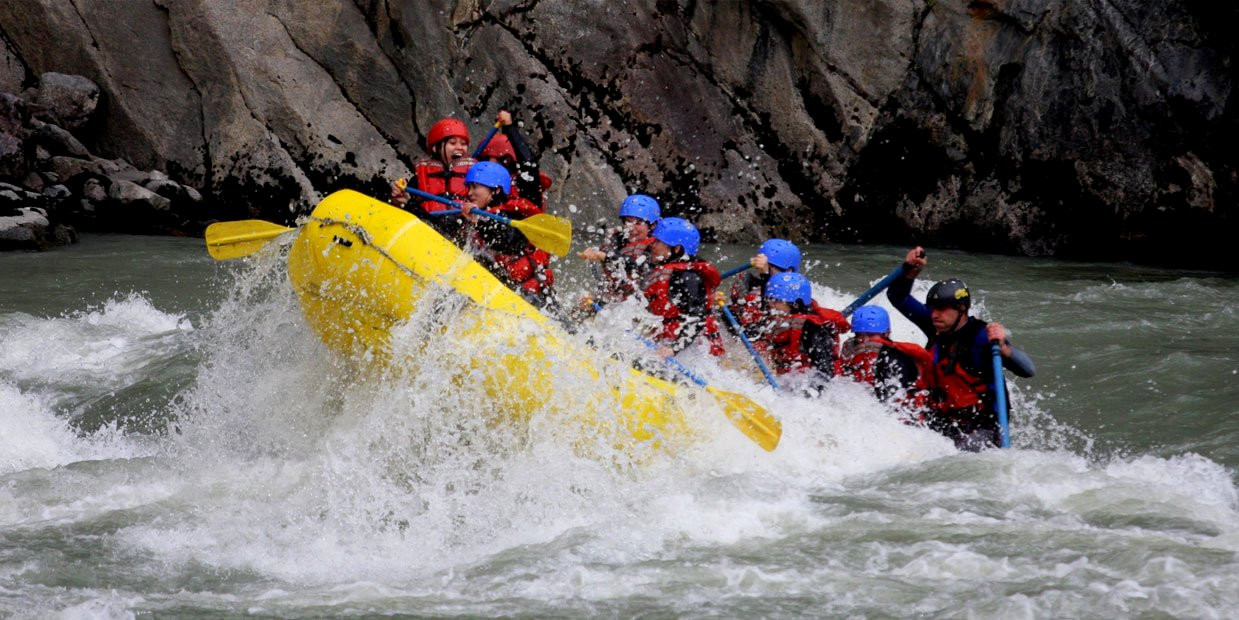
-
Location and Accessibility: The Marshyangdi River originates from the northern slopes of the Annapurna Himalayas and winds its way through the Manang district before joining the Trishuli River in the lowlands. The usual starting point for rafting expeditions is near the village of Ngadi, after a scenic drive from either Kathmandu or Pokhara. This location offers not only access to challenging rapids but also stunning mountain landscapes that are quintessentially Nepalese.
-
Rapids and Rafting Experience: The Marshyangdi offers some of the most continuous and intense white water rapids in Nepal, rated between Class IV and V+. The river is characterized by steep, technical drops combined with powerful currents that challenge even the most experienced rafters. Each section of the river brings new and exhilarating challenges, requiring precise maneuvering and a bold spirit.
-
Scenic Beauty: Rafting down the Marshyangdi is as much a visual experience as it is an adventurous one. The river flows through narrow gorges flanked by towering Himalayan peaks and lush vegetation. The views of the Annapurna and Manaslu ranges are spectacular and provide a dramatic backdrop to the high-adrenaline action of the rapids.
-
Safety and Facilities: Given the challenging nature of the Marshyangdi River, rafting here is conducted by highly experienced guides familiar with its waters. Safety is a paramount concern, with all necessary precautions taken to ensure a secure rafting trip. This includes comprehensive safety briefings, top-notch equipment, and rescue procedures in place for the more difficult sections of the river.
-
Duration and Packages: Rafting trips on the Marshyangdi are typically multi-day adventures, lasting anywhere from two to four days. These expeditions often include camping along the riverside, where rafters can relax and unwind in the midst of nature after an exhilarating day on the river. Packages usually cover all logistical arrangements including transport, equipment, meals, and accommodation.
Ideal for
The Marshyangdi River is perfect for:
-
Experienced rafters looking for high-intensity rapids.
-
Adventure seekers who appreciate the combination of challenging sports and breathtaking nature.
-
Those who are physically fit and ready for an action-packed journey through one of Nepal’s most dynamic rivers.
Marshyangdi River provides an extreme rafting experience that is not for the faint-hearted. Its wild rapids and beautiful surroundings make it a top destination for white water enthusiasts looking to test their skills against some of the toughest waters in Nepal. If you’re seeking a serious adrenaline rush amid some of the world’s most stunning landscapes, the Marshyangdi is the river to conquer.
Health and Safety for Top 5 Rivers for White Water Rafting in Nepal
Health and safety are paramount when embarking on white water rafting adventures, especially in a challenging and dynamic environment like Nepal. The top 5 rivers for white water rafting—Trishuli, Bhote Koshi, Kali Gandaki, Seti, and Marshyangdi—each offer unique challenges and require specific safety measures. Here are the key health and safety considerations for rafting these rivers:
Pre-Trip Preparation
-
Medical Check-Up: Ensure all participants are fit for the physical demands of rafting. It's essential to disclose any medical conditions or allergies to the guides beforehand.
-
Travel Insurance: Secure comprehensive travel insurance that covers extreme sports, including medical evacuation and hospitalization.
-
Safety Briefing: Attend a thorough safety briefing conducted by experienced guides before embarking on the rafting trip. Understand the basics of raft handling, swimming in rapid waters, and emergency procedures.
Equipment and Gear
-
Quality Rafting Equipment: Use well-maintained and high-quality rafting gear including rafts, paddles, helmets, life jackets, and wetsuits. Equipment should meet international safety standards.
-
Personal Protective Equipment: Always wear a helmet and life jacket, which are critical for protection in turbulent waters. Wetsuits help maintain body temperature in cold waters, particularly in high-altitude rivers like the Marshyangdi and Kali Gandaki.
During the Rafting
-
Guide Expertise: Ensure that guides are experienced and certified in river navigation, first aid, and emergency rescue techniques. Their knowledge of the river's specific challenges and conditions is crucial for a safe rafting experience.
-
Stay Hydrated: Dehydration can be a risk during physical exertion and sun exposure. Drink enough water before and during the trip.
-
Group Cohesion: Follow the guide's instructions and work as a cohesive unit, maintaining communication with fellow rafters throughout the journey.
-
Respect the Weather: Be aware of weather conditions and water levels, which can dramatically affect rafting safety. Avoid rafting during extreme weather conditions.
Post-Rafting
-
Check for Injuries: After completing the trip, check for any injuries incurred during rafting and treat them immediately. Minor cuts and bruises are common and should be cleaned and dressed.
-
Feedback Session: Participate in a post-trip discussion to share feedback about the experience, which can include any safety issues encountered. This helps improve future rafting experiences.
Emergency Preparedness
-
Emergency Contact Numbers: Keep a list of emergency contacts, including local rescue services and the nearest medical facilities.
-
Evacuation Plans: Be aware of the evacuation routes and procedures. Guides should have a clear action plan for rapid evacuation in case of emergencies.
Environmental Considerations
-
Preserve Local Ecology: Be mindful of the ecological impact of rafting. Avoid littering and adhere to eco-friendly practices to protect the riverine environment.
-
Respect Wildlife: Maintain a safe and respectful distance from any wildlife encountered during the rafting trip.
By adhering to these safety guidelines and preparedness measures, rafters can ensure a safe and enjoyable adventure on Nepal’s rivers. Whether you’re navigating the gentle currents of the Seti or tackling the vigorous rapids of the Marshyangdi, being well-prepared is key to a successful and safe rafting experience.
Best Time for Top 5 Rivers for White Water Rafting in Nepal
When planning a white water rafting adventure in Nepal, it's essential to consider the seasonal variations that affect the rivers. Here's a guide to the best times to go rafting based on water levels and weather conditions:
-
Post-Monsoon Season (September to December): This period offers the highest water levels due to the recent monsoon rains, making it ideal for those looking for thrilling and challenging rapids. The weather is generally pleasant, and the higher water levels create more intense and exciting rafting experiences.
-
Spring (March to June): Spring is another excellent time for rafting, with moderate water levels that are suitable for both experienced rafters and beginners. The weather is warmer, and the rivers flow with good energy, providing a balanced rafting experience.
-
Dry Season (Late December to February): While the water levels are lower during this time, making some of the rapids less challenging, it is still possible to enjoy rafting, especially on rivers known for their scenic beauty and gentler flows. This time of year is colder, so it's essential to be prepared with appropriate gear.
-
Monsoon Season (June to September): Generally, rafting during the monsoon is not recommended due to very high water levels and turbulent flows, which can increase the risk of rafting. However, for the most adventurous and experienced rafters, certain rivers might still offer safe opportunities with the right precautions and under expert guidance.
Choosing the right time for your rafting trip can enhance your experience by offering a mix of adventure, safety, and the beauty of Nepal's natural landscapes.
Nepal's rivers offer some of the most thrilling white water rafting adventures in the world. With a range of rivers suited to both adrenaline seekers and those looking for a serene experience, Nepal caters to all levels of rafters. The best seasons for rafting—post-monsoon and spring—provide optimal conditions for enjoying both the challenging rapids and the breathtaking Himalayan scenery. Whether you're in search of adventure or scenic beauty, rafting in Nepal delivers an unforgettable experience that combines natural wonders with cultural richness.
FAQs for Top 5 Rivers for White Water Rafting in Nepal
Q: What is the best time to go white water rafting in Nepal?
A: The optimal times for white water rafting in Nepal are from September to early December and from March to June, due to favorable water levels and weather conditions.
Q: Which river in Nepal is best for beginner rafters?
A: The Trishuli River is highly recommended for beginners because of its moderate rapids and convenient location. The Seti River is also suitable, known for its gentle rapids and warm waters.
Q: Are there any rivers suitable for experienced rafters looking for a challenge?
A: Yes, experienced rafters seeking challenging rapids should consider the Bhote Koshi and Marshyangdi Rivers. The Bhote Koshi features steep and technical rapids, while the Marshyangdi offers intense and continuous white water.
Q: How long are the typical rafting trips on these rivers?
A: Trip lengths vary; day trips are common on the Trishuli River, whereas the Bhote Koshi, Kali Gandaki, Seti, and Marshyangdi Rivers often offer multi-day adventures ranging from two to four days.
Q: What should I bring for a rafting trip in Nepal?
A: Essential items include quick-drying clothes, swimwear, a change of clothes, water shoes, sunscreen, a hat, sunglasses with a retainer strap, and personal medication. For overnight trips, pack additional camping gear and warmer clothing.
Q: Is rafting safe in Nepal?
A: Rafting in Nepal is safe with reputable companies that provide experienced guides, safety gear, and comprehensive safety briefings. Always adhere to the guide's instructions and follow all safety protocols.
Q: Can I raft during the monsoon season?
A: Rafting during the monsoon (June to September) is generally advised against due to high water levels and turbulent rapids, though some exceptions exist for certain rivers and sections for highly experienced rafters.
Q: Do I need previous rafting experience to join a rafting trip in Nepal?
A: No previous rafting experience is necessary for many rivers, especially those with milder rapids like the Trishuli and Seti. However, rivers with intense rapids like the Bhote Koshi and Marshyangdi require good physical fitness and ideally, previous rafting experience.
Q: How do I choose a rafting company in Nepal?
A: Select a company based on positive reviews, experienced guides, proper licensing, and a strong commitment to safety. Verify the inclusivity of their packages, including safety equipment, transportation, meals, and accommodation.
Q: What kind of wildlife can I see while rafting in Nepal?
A: The rivers flow through diverse ecosystems, enabling sightings of various birds, monkeys, and occasionally deer along the more remote riverbanks.
For the Nepal tour, please click here.
If you are looking for different kinds of Nepal Tours or Trekking Packages, feel free to contact us.
